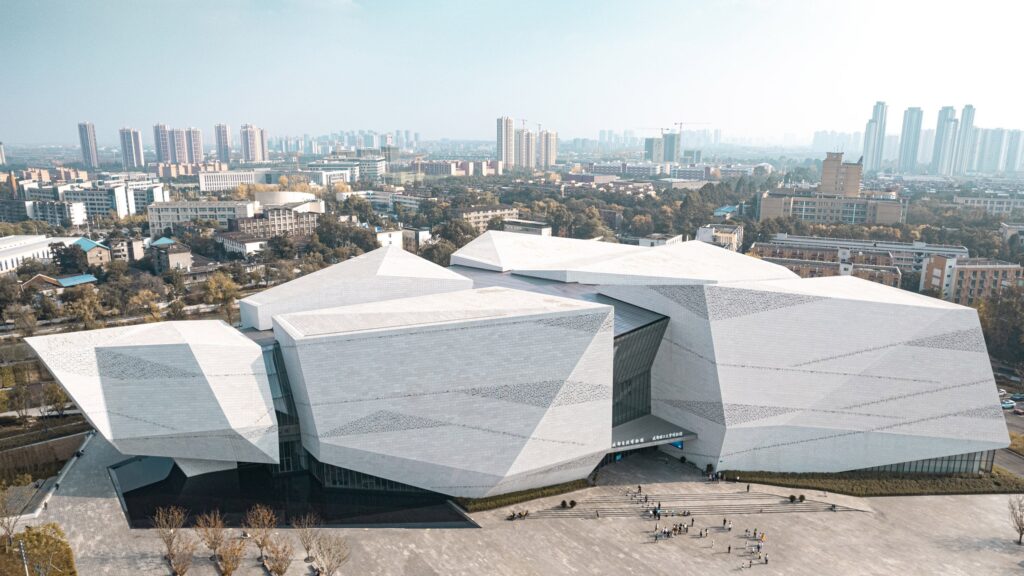Faceted, rock-like forms clad with panels of perforated granite define the Chengdu Natural History Museum in China, which was designed by US studio Pelli Clarke & Partners and local studio CSWADI.
Completed in 2022, the 50,000-square-metre museum is part of a developing “entrepreneurial hub” in Chengdu, combining public spaces, shops and a cafe with galleries, a cinema and educational facilities.
For the form of the building, Pelli Clarke & Partners and China Southwest Architectural Design and Research Institute (CSWADI) turned to the jagged mountain peaks of China’s Sichuan Province.
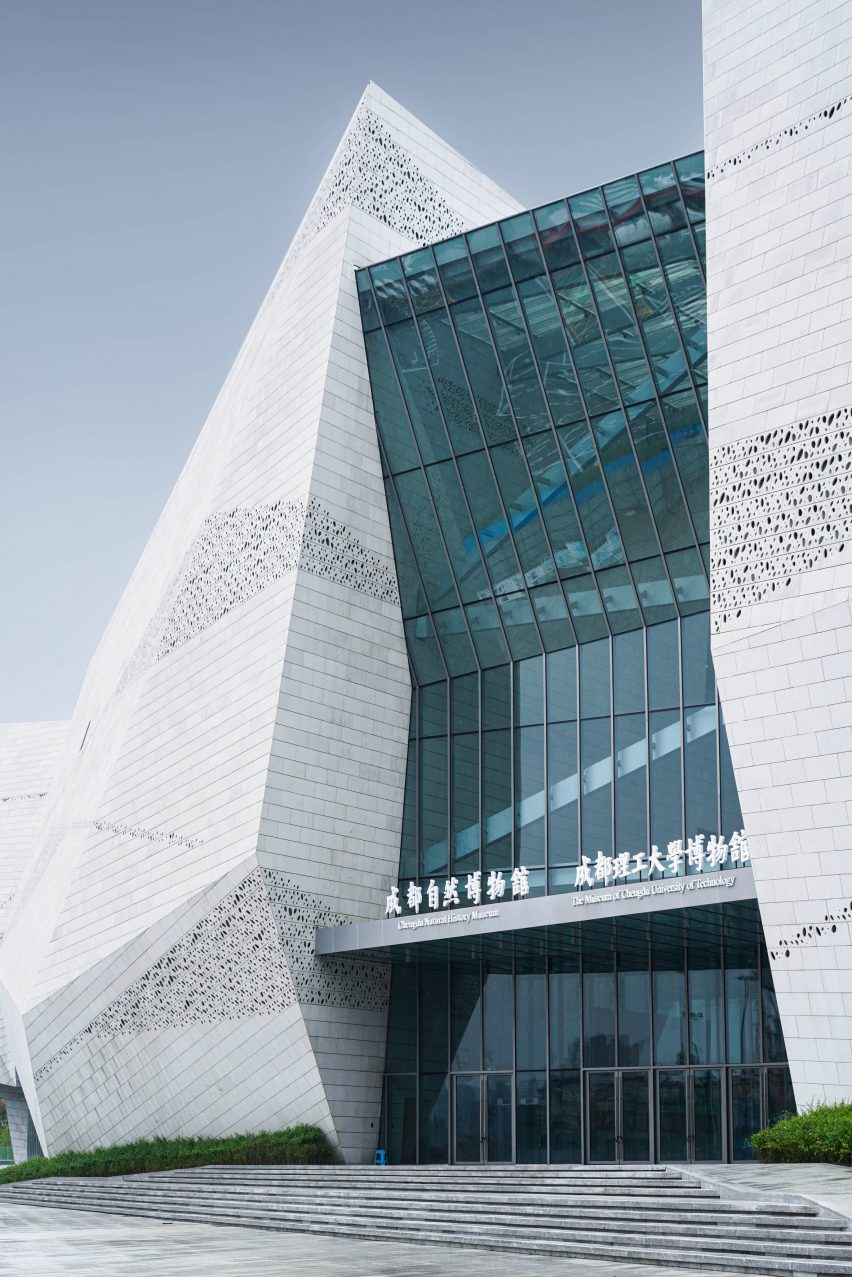
The two studios created a cluster of “rock volumes” clad in granite panels that are cut through and connected by large glazed atria.
“The building forms lift from the ground at certain moments to reveal the public spaces within, at the same time maintaining a firm anchor to the earth,” the architects said.
“The individual mountains, or rock volumes, are realised as distinct exhibition spaces, separated and held together by light-filled public spaces.”
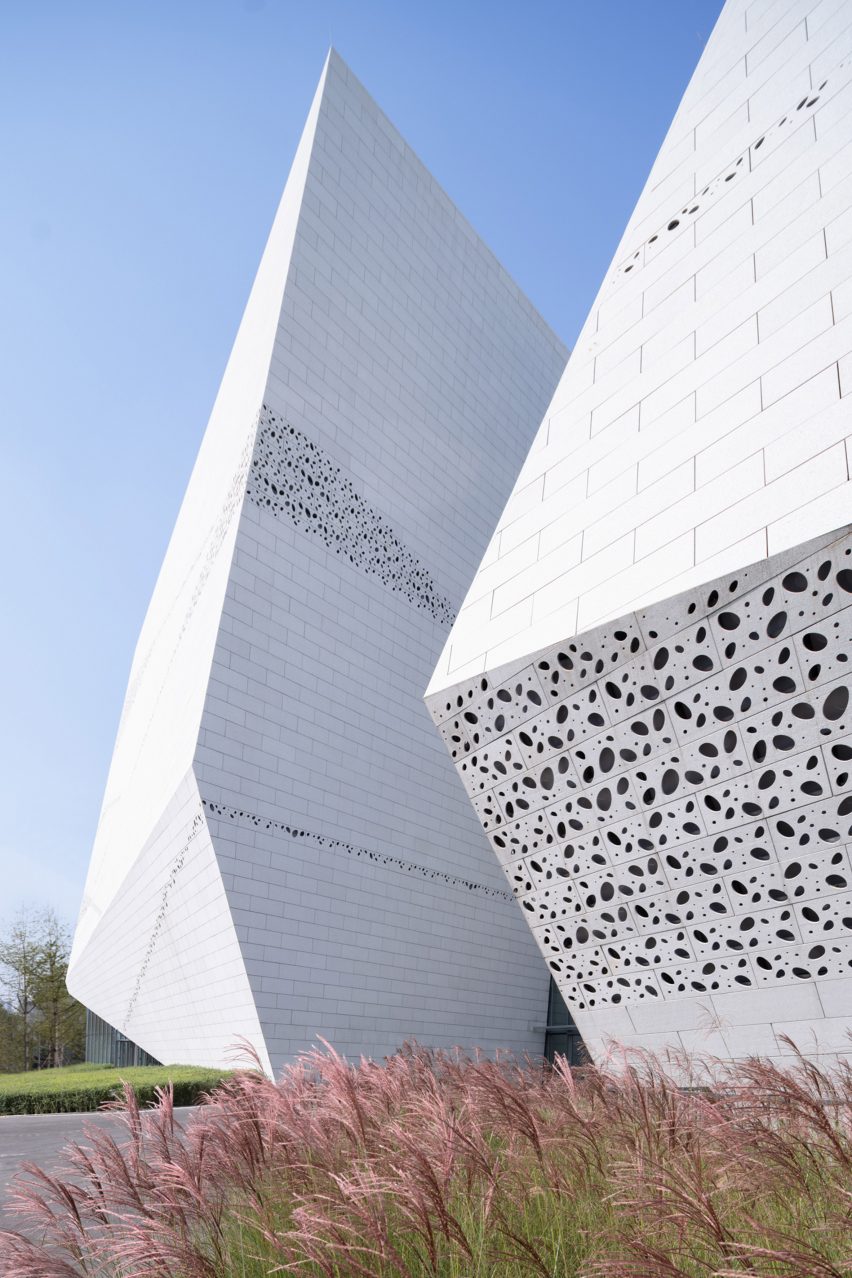
Split loosely into six distinct “rocks”, the building is cut across both axes by circulation areas, linking the road to the east with landscaped gardens and water pools alongside a canal to the west.
Inside the full-height atrium spaces, elevated link bridges connect the rock volumes. These were informed by the small wooden plank paths, or “Shu” roads, that cross the province’s mountain ranges.
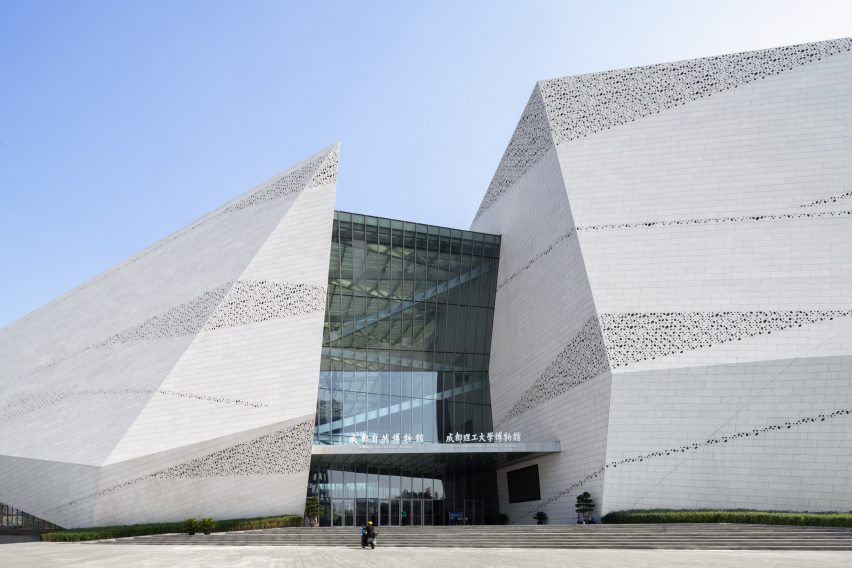
“[The building] was designed to be experienced as an adventure – a sloping, interactive space connecting the second level to the third where visitors can walk among the dinosaurs positioned along the path and suspended from the ceiling,” said the architecture studios.
While the building primarily houses exhibition spaces, two levels of offices sit at its southeastern corner. At the opposite end, a restaurant overlooks the gardens through a full-height glass wall.
Facing the road, the building presents a more closed facade, with a glazed entrance sandwiched between two large rock-like volumes that house office and administrative spaces.
On the opposite side, the building opens out to the adjacent gardens, with a projecting glazed walkway connecting two exhibition spaces.
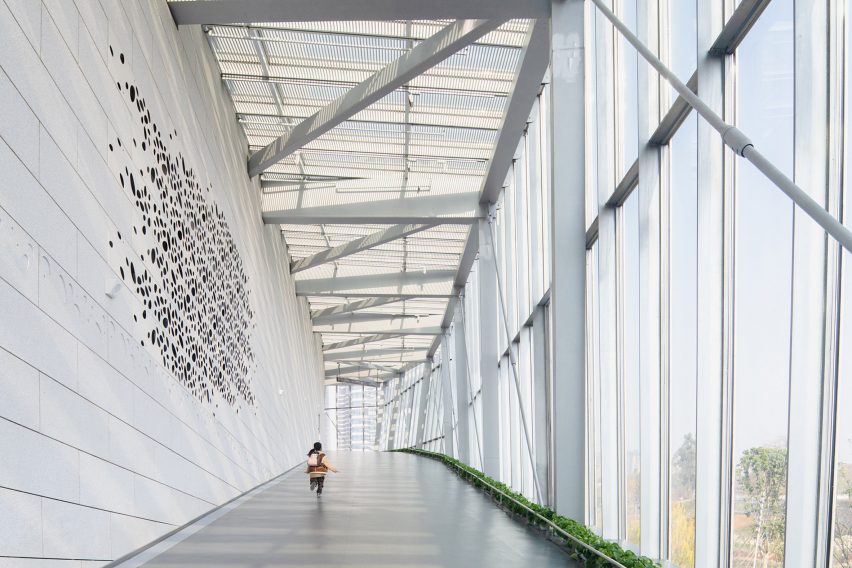
Across the facade, angular stripes of perforated granite panels bring a feeling of porosity to the building’s envelope, allowing dappled light in during the day and becoming illuminated by the interior lighting at night.
“The clefts between the rock forms are transparent and glassy, designed to encourage reflection, observation, and interaction,” said the studios.
“These in-between spaces are visual and physical connections between the exhibits, and likewise to the city, street, landscape and the canal.”
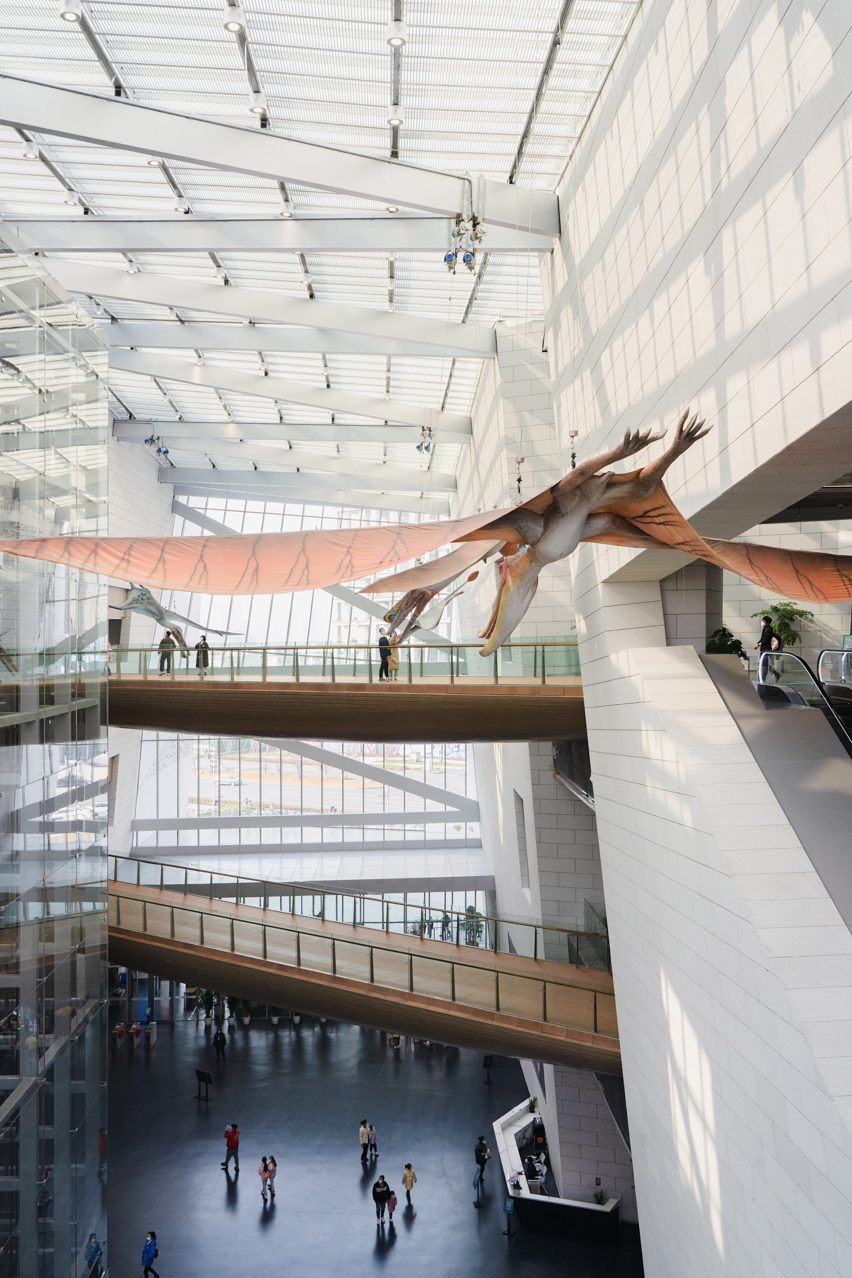
Other projects recently completed by Pelli & Clarke include the Mitikah skyscraper, the tallest in Mexico City, which followed the practice’s completion of the tallest skyscraper in Japan in 2019.
The photography is by Arch-Exist unless stated otherwise.

